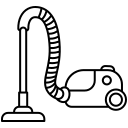Common Mistakes Made When Cleaning and How to Avoid Them

Introduction: The Importance of Proper Cleaning
Proper cleaning plays a vital role in maintaining a healthy and pleasant living environment. Ensuring that your living space is clean not only contributes to the overall aesthetics of your home but also has significant health benefits. A clean home can reduce the risk of allergies, respiratory issues, and the spread of harmful bacteria and viruses. This is especially crucial in high-traffic areas like kitchens and bathrooms, where cleanliness directly impacts hygiene standards.
Beyond health benefits, regular and thorough cleaning helps in prolonging the life of household items. Dust, grime, and other contaminants can deteriorate surfaces and materials over time. For instance, neglecting to clean your carpets can lead to embedded dirt that wears down fibers, while uncleaned kitchen appliances can suffer from reduced efficiency and increased wear and tear. Thus, proper cleaning ensures that your investments in household items are protected and maintained for the long term.
However, it is not uncommon for people to make mistakes while cleaning—errors that can negate the benefits of their efforts or even cause damage. These common cleaning mistakes range from using the wrong products to improper techniques that do more harm than good. Understanding these pitfalls and learning how to avoid them is crucial for effective and safe cleaning practices. In the following sections, we will delve into some of these frequent errors and provide practical advice on how to steer clear of them, ensuring that your cleaning routine is both efficient and beneficial.
One of the most prevalent mistakes in cleaning is the use of inappropriate cleaning products for various surfaces and materials. This error can lead to significant damage, reducing the longevity of items and sometimes even posing health risks. For instance, using a harsh chemical cleaner on a delicate wooden surface can strip away its finish, causing irreversible damage. Similarly, employing a product with strong acids on natural stone surfaces like marble or granite can result in etching and discoloration.
Certain chemicals, while effective at removing dirt, can be harmful if used incorrectly. Ammonia-based cleaners, for example, are powerful but can be detrimental to surfaces like glass and mirrors if not properly diluted. Additionally, the misuse of bleach can cause respiratory issues and skin irritation, making it crucial to follow the manufacturer’s guidelines and safety precautions.
To avoid these pitfalls, it is essential to select the right cleaning products tailored to the specific surface and type of dirt or stain. Start by reading labels and understanding the composition of each cleaner. It’s advisable to use pH-neutral cleaners for most surfaces, as they are less likely to cause damage. For wooden surfaces, opt for products specifically designed for wood care to maintain their finish and integrity. When dealing with natural stone, choose cleaners that are free of acids and abrasives to preserve the material’s natural beauty.
Moreover, always test a small, inconspicuous area before applying a new cleaning product widely. This simple step can prevent potential damage and ensure the product is safe for the intended surface. By being mindful of the products you use and their appropriate applications, you can maintain the cleanliness and longevity of your belongings while safeguarding your health.
One of the most common mistakes people make when cleaning is overlooking the importance of reading labels on cleaning products. This seemingly minor oversight can lead to a range of issues, from ineffective cleaning to potential health hazards. Understanding the instructions, warnings, and proper usage outlined on product labels is crucial for effective and safe cleaning.
Cleaning product labels contain vital information that guides users on how to use the product correctly. For instance, instructions may specify the appropriate amount of product to use, dilution ratios, and the recommended surfaces for application. Ignoring these details can result in suboptimal cleaning performance, wasted product, and even damage to surfaces.
Warnings on labels are equally important. Many cleaning products contain chemicals that can be harmful if misused. Labels often highlight potential hazards such as skin irritation, respiratory issues, or eye damage. By reading and adhering to these warnings, users can take the necessary precautions, such as wearing gloves or ensuring proper ventilation, to protect themselves and others from harm.
Proper usage instructions help maximize the effectiveness of cleaning products. For example, some disinfectants require a specific contact time to kill germs effectively. Skipping this step or not following the recommended duration can leave surfaces inadequately sanitized. Additionally, certain products should not be mixed with others, as this can create dangerous chemical reactions.
To avoid these pitfalls, it’s essential to take a few moments to read and understand the labels on cleaning products. Key information to look for includes usage instructions, warnings, dilution ratios, and recommended surfaces. By doing so, you ensure that you are using each product as intended, achieving the best possible cleaning results while maintaining safety.
Neglecting Regular Maintenance
One of the most common mistakes in cleaning practices is neglecting regular maintenance. Irregular or infrequent cleaning can lead to the build-up of dirt and grime, which, over time, becomes increasingly difficult to remove. This accumulation not only poses hygiene concerns but can also cause damage to surfaces, appliances, and household items, ultimately necessitating more intensive cleaning efforts and potentially costly repairs or replacements.
Establishing a regular cleaning schedule is essential for maintaining a clean and healthy environment. Consistency in cleaning routines helps prevent the build-up of dirt and grime, making daily upkeep more manageable and less time-consuming. A structured cleaning regimen ensures that all areas of a home or workspace are attended to systematically, reducing the likelihood of overlooked spots where dust and debris can accumulate.
To facilitate effective cleaning, consider implementing a checklist that delineates tasks based on their frequency. Here is a sample checklist to help structure your cleaning efforts:
Daily Cleaning Tasks
- Wipe down kitchen counters and dining tables
- Sweep or vacuum high-traffic areas
- Wash dishes and clean the sink
- Take out the trash
- Quickly tidy up living spaces
Weekly Cleaning Tasks
- Dust all surfaces, including shelves and electronics
- Vacuum and mop floors thoroughly
- Clean bathroom fixtures, including the toilet, shower, and sink
- Change bed linens and wash them
- Wipe down appliances and clean microwave interiors
Monthly Cleaning Tasks
- Deep clean kitchen appliances, such as the oven and refrigerator
- Dust ceiling fans and light fixtures
- Clean windows and mirrors
- Wash or vacuum curtains and upholstery
- Check and clean air vents and filters
By adhering to a regular cleaning schedule, the task of maintaining a clean environment becomes less daunting. Regular maintenance not only preserves the aesthetic and functional integrity of your space but also contributes to a healthier living or working environment. Avoiding the pitfalls of inconsistent cleaning can save time and effort while ensuring your surroundings remain inviting and sanitary.
Improper Use of Cleaning Tools
One of the most frequent errors in cleaning routines is the improper use of cleaning tools. A common mistake involves using dirty cloths or rags, which can spread dirt and bacteria rather than removing them. To avoid this, ensure that cloths are clean before use and launder them regularly with hot water and detergent. Additionally, designate specific cloths for different areas of the house to prevent cross-contamination.
Sponges are another tool that often gets misused. They can harbor bacteria if not replaced frequently. It is advisable to change sponges every few weeks or sooner if they start to smell or deteriorate. To extend the life of a sponge, it can be sanitized by soaking in a bleach solution or microwaving it for a minute, ensuring it is wet to prevent a fire hazard.
Furthermore, using the wrong tools for specific tasks can reduce cleaning effectiveness and potentially damage surfaces. For example, using a coarse scrub brush on delicate surfaces like glass or non-stick cookware can cause scratches. Instead, use soft cloths or non-abrasive pads for such items. Similarly, a vacuum cleaner with an incorrect setting or attachment can damage carpets or hard floors. Always refer to the manufacturer’s guidelines to select the appropriate tool for the task.
Proper maintenance of cleaning tools is essential for their longevity and performance. Regularly check and clean vacuum filters, mop heads, and broom bristles to ensure they work efficiently. Store tools in a dry, well-ventilated area to prevent mildew and rust.
By avoiding these common mistakes and adopting correct practices, you can enhance the effectiveness of your cleaning routine, ensuring a cleaner and healthier living environment.
Skipping the Dusting Step
One of the most common mistakes made during cleaning is skipping the dusting step. This oversight can significantly undermine the effectiveness of all subsequent cleaning efforts. Dust particles are notorious for their ability to accumulate quickly on various surfaces, from furniture to electronic devices. When left unchecked, this accumulation can not only make your home look unclean but also negatively impact indoor air quality.
Dust is composed of tiny particles that can include dead skin cells, pollen, pet dander, and even microscopic organisms. When these particles are not regularly removed, they can become airborne and exacerbate respiratory issues, particularly for those with allergies or asthma. Therefore, effective dusting is essential, not just for aesthetic purposes but also for maintaining a healthier living environment.
To prevent dust from accumulating, it’s crucial to employ proper dusting techniques. Start by using a microfiber cloth or an electrostatic duster, as these tools are specifically designed to capture dust rather than just moving it around. For hard-to-reach areas like ceiling fans, light fixtures, and shelves, extension dusters can be particularly useful. Additionally, consider using a vacuum cleaner with a HEPA filter to remove dust from floors and carpets, as this will also help to capture smaller particles that may be floating in the air.
When dusting, always work from the top down. This ensures that any dust dislodged from higher surfaces will be captured as you clean lower areas. Don’t forget to dust behind and underneath furniture, as these spots are often neglected but can harbor significant dust buildup. To make the task easier, you might also consider using dusting sprays or anti-static wipes, which can help to reduce the static cling that attracts dust to surfaces.
By integrating these dusting techniques into your regular cleaning routine, you can enhance the overall effectiveness of your cleaning efforts and contribute to a cleaner, healthier home environment.
Ignoring Hidden Areas
A common oversight during the cleaning process is neglecting hidden or hard-to-reach areas such as behind appliances, under furniture, and inside vents. These spaces, often out of sight, can easily accumulate dust, dirt, and debris, which, if left unattended, may lead to significant issues. Ignoring these areas can result in pest infestations, as insects and rodents are attracted to the food particles and waste that accumulate in these spots. Additionally, the buildup of dust and moisture in hidden areas can create an ideal environment for mold growth, posing health risks to occupants.
To avoid these potential problems, it is essential to incorporate regular cleaning of hidden areas into your routine. Start by moving appliances such as refrigerators, stoves, and washing machines to clean behind and underneath them. Use a vacuum cleaner with a long, narrow attachment to reach the dust and debris that collects in these spots. Similarly, make a habit of periodically shifting furniture to access and clean underneath it. Items such as sofas, beds, and cabinets should be moved at least once every few months to ensure no dirt buildup occurs.
Vents and air ducts are another often-neglected area that requires attention. Over time, these can become clogged with dust and other particles, reducing air quality and system efficiency. To clean vents, remove the covers and use a vacuum to eliminate accumulated debris. For a more thorough cleaning, consider hiring a professional to service your HVAC system periodically.
While cleaning hidden areas may seem daunting, it is a necessary task to maintain a healthy and pest-free environment. By integrating these practices into your regular cleaning routine, you can prevent the buildup of dirt and dust, thereby avoiding the potential consequences of neglect. Consistent attention to these often-overlooked spots will ensure a cleaner and healthier living space for everyone.
Rushing Through the Cleaning Process
One of the most common mistakes made when cleaning is rushing through the tasks. This can result in incomplete or ineffective cleaning, which may necessitate redoing the job later. Taking the time to ensure a thorough job is essential for maintaining a clean and hygienic environment. By adopting a methodical approach, it’s possible to achieve more effective results.
Firstly, it is crucial to formulate a cleaning plan. This plan should list all tasks that need to be accomplished and the order in which they should be tackled. Breaking down the cleaning process into smaller, manageable tasks can help in maintaining focus and ensuring that no areas are overlooked. For instance, start by dusting surfaces before moving on to vacuuming or mopping floors. This prevents dust from falling onto freshly cleaned floors.
Secondly, it is important to gather all necessary cleaning supplies before beginning the task. Having everything within reach can save time and reduce interruptions, allowing for a more streamlined cleaning process. Equip yourself with appropriate cleaning agents, tools, and protective gear to handle various surfaces and types of dirt or grime effectively.
To stay organized and avoid rushing, allocate specific time slots for each cleaning task. Setting a timer can be an excellent way to ensure that adequate time is spent on each chore without feeling overwhelmed. It’s also beneficial to take short breaks to prevent fatigue, which can lead to hurrying and missing spots.
Lastly, focusing on one task at a time rather than multitasking can significantly enhance the quality of cleaning. Concentrating on a single task allows for meticulous attention to detail, ensuring that every nook and cranny is attended to. By remaining patient and methodical, the overall efficiency of the cleaning process is improved, leading to a cleaner and more organized space.
Conclusion: Creating Effective Cleaning Habits
In conclusion, avoiding common cleaning mistakes is crucial for maintaining a clean and healthy living environment. By understanding and rectifying these errors, you can enhance the effectiveness of your cleaning routines significantly. Remember, the key points discussed in this blog post highlight the importance of using the right cleaning products for specific surfaces, following proper cleaning techniques, and adhering to a regular cleaning schedule.
Implementing these tips and strategies will not only improve the cleanliness of your home but also contribute to better overall home maintenance. Proper cleaning habits can prevent the buildup of dirt and grime, reduce the risk of allergies, and extend the lifespan of your household items. It’s essential to stay informed about the best cleaning practices and continuously refine your methods to ensure optimal results.
Maintaining a clean living space offers numerous benefits, including a more pleasant and inviting home environment, reduced stress levels, and improved health. By committing to effective cleaning habits, you invest in the long-term wellness of your household. Embrace the guidance provided in this blog, and take proactive steps to enhance your cleaning routines. Your efforts will undoubtedly pay off, leading to a healthier, more organized, and enjoyable living space.











 Home
Home  Book Now
Book Now  Call Us
Call Us  Whatsapp
Whatsapp  Login
Login